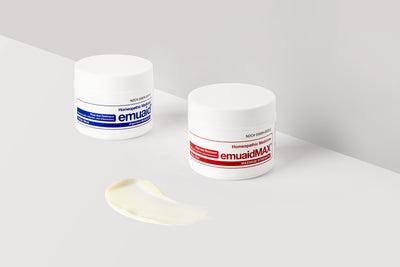- What is a Diabetic Ulcer?
- Where Does An Ulcer Appear?
- What are the Symptoms of a Diabetic Ulcer?
- Complications of Untreated Diabetic Ulcers
- Do You Have To Be Diabetic To Have Ulcers?
- What Causes Diabetic Ulcers?
- Diagnosing A Diabetic Ulcer
- How to Prevent Diabetic Ulcers?
- How to Treat Diabetic Ulcers?
- Conclusion
Diabetic Ulcers - Causes, Symptoms, and Treatment
Table of Contents
What is a Diabetic Ulcer?
A neurogenic ulcer is also known as a diabetic ulcer. Diabetic ulcers are generally found on the bottom of the foot and can occur on either or both feet. Other areas that can be affected include the legs, hands, and even in the folds of skin, around or on the stomach. Diabetic ulcers can be painful. Many people feel embarrassed by their appearance, in addition to the physical pain they experience.
A typical diabetic ulcer on the foot looks like a red sore that manifests in the surface of the skin and can form in a variety of areas. However, sores can occur deeper in the skin. A deep foot ulcer can extend to the tendons and bones of the feet and must be treated quickly. If the condition worsens, the diabetic ulcer will likely become infected.
Where Does An Ulcer Appear?
There are many different kinds of ulcers. While peptic ulcers form in the stomach or upper intestine lining, ulcers can also occur almost anywhere on the body.
Ulcers that are found outside the body can include leg and foot ulcers. These ulcers are generally swollen or tender and can cause itchiness or pain. Skin discoloration and changes in texture are also common in ulcers found outside the body.
Whether they are found inside or on the skin's surface, ulcers are sores that are often slow to heal. Once they have disappeared, ulcers can return if not treated properly. Depending on the cause of the ulcers, they can require different treatment options.
What Do Diabetic Ulcers Look Like?
Diabetic ulcers commonly appear on the feet and can be a major health concern for individuals with diabetes. They often start as small blisters or cuts, but can progress to larger, open sores if left untreated. These ulcers typically have a reddish base, sometimes with yellowish tissue, and can be surrounded by callused or discolored skin. Swelling, drainage, and foul odor may also be present.
What are the Symptoms of a Diabetic Ulcer?
Since diabetic ulcers often occur on the foot, pain can usually be felt while walking or standing. Wounds that come from diabetic ulcers may look like craters and can leak if they become infected. While the signs of a diabetic ulcer may seem obvious, but to many, they are not.
Diabetic ulcers can be complicated by poor circulation. When the blood does not properly circulate throughout the body, the effects can vary from mild to severe. One problem that can commonly occur with diabetes is the loss of sensation created from poor blood circulation. When the foot becomes desensitized to pain, detecting a diabetic ulcer can be much more difficult.
Poor circulation can also slow the healing process of a foot wound. While some scars may heal without treatment, diabetic ulcers are more likely to become infected. When this happens, the wound may look slightly different from a regular skin ulcer.
An infected diabetic ulcer can create symptoms such as swelling, an elevated skin temperature when touched, and pain. Pus, a foul odor, and other “secondary wound” signs are also common in a diabetic ulcer infection.
Complications of Untreated Diabetic Ulcers
If a diabetic ulcer is not adequately treated, the risk of infection can significantly increase. Abscesses, the spread of disease, gangrene, and eventual amputation are all possible outcomes of poorly treated or neglected diabetic ulcers.
Diabetic foot ulcers can quickly become severe conditions. By treating them as soon as possible, the condition can be remedied before the chance of infection. Serious wounds will not go away on their own and will require prompt attention.
Fortunately, diabetic ulcers can be easily detected. Unlike ulcers that form on the inside of the body, these wounds can be seen and felt. A diabetic ulcer's symptoms include foot pain, discoloration or numbness, and a deepening wound that will not heal with time. Diabetic ulcers occur in those who have diabetes. The diagnosis of diabetes combined with painful wounds on the bottom of the feet is a good indication that a diabetic ulcer needs treatment.
Do You Have To Be Diabetic To Have Ulcers?
Ulcers can happen to almost anyone. Since there are a variety of different ulcers, many individuals can find themselves needing treatment at some point in their life. Diabetic ulcers, however, are specific to those who have diabetes.
There are two types of diabetes: diabetes 1 and diabetes 2. Type 1 diabetes is diagnosed when a person is unable to produce insulin. Because the body cannot produce any insulin at all, those diagnosed with this type of diabetes must rely on insulin injections to stay alive. Type 2 diabetes occurs when the individual produces but cannot helpfully respond to insulin.
Those who are diagnosed with either type 1 or 2 diabetes are at risk for diabetic ulcers. Because diabetes can reduce nerve functioning due to its neuropathy, nerves that are typically used to send pain sensation to the brain from the feet cannot function properly. Not only does this mean that a foot ulcer may go unnoticed, but in conjunction with reduced blood flow, diabetic ulcers are less likely to heal without proper treatment.
What Causes Diabetic Ulcers?
Those at risk for a diabetic ulcer of the foot often have poor blood circulation and diabetes. Those who smoke cigarettes, are overweight, and suffer from high cholesterol or blood pressure can also face an increased risk for diabetic ulcers. Additional health concerns include peripheral neuropathy and abnormalities of the bones.
Peripheral neuropathy involves nerve damage to the feet. When nerve damage occurs to the feet, wearing ill-fitting shoes can trigger an ulcer due to the numbness in that area. If prolonged activity in tight-fitting footwear occurs, an ulcer may form from the rubbing contact created on the surface of the skin.
Not all individuals diagnosed with diabetes will experience diabetic ulcers. Those who do experience these types of ulcers, however, will need prompt treatment. Diabetes can affect any race and age and is a common diagnosis in the United States. For those who do not take care of diabetic ulcers, diabetes can result in lower-extremity amputations. For this reason, those who have been diagnosed with diabetes are advised to pay extra attention to any wounds on the foot.
Diagnosing A Diabetic Ulcer
An accurate diagnosis of a diabetic ulcer must be given by a medical health professional. Most doctors will first provide a physical examination of the patient’s foot. Should further tests be required, a doctor may recommend an X-ray or an MRI scan.
An X-ray can show any changes in foot alignment through a system of imaging. An X-ray image can show loss of bone mass and hormonal imbalances that can potentially relate to the diagnosis of diabetes.
MRI scans use three-dimensional images of the body’s soft tissue. If the extent of damage needs to be assessed, an MRI scan can use magnetic radio waves to reveal possible inflammation. This test can expose any significant infections in the foot.
One of the simplest tests a physician can use to diagnose an infectious diabetic ulcer is the blood test. This test is usually done by drawing blood at a doctor’s office so that the results can be sent to a lab for further information.
How to Prevent Diabetic Ulcers?
For those who are diabetic or who have experienced ulcers in the past, there are some ways to prevent foot ulcers. If a foot wound has occurred due to a diabetic ulcer, there is a risk that it may return.
- Protect. By wearing proper footwear, the feet can be protected from possible skin irritation or future infection. Washing the feet each day in lukewarm water is recommended, in addition to socks and proper footwear that does not pinch or restrict the foot.
- Inspect. At the end of each day, inspecting both feet can be helpful when preventing future diabetic ulcers. Checking the toes and ankle area is important, but examining underneath the foot is also critical.
- Properly manage diabetes. People with diabetes must manage their blood sugar and blood pressure, along with regular visits to the physician. By staying on top of pre-existing health conditions, instances of diabetic ulcers may be reduced.
How to Treat Diabetic Ulcers?
While prevention plays an integral part in managing physical health conditions, diabetic ulcers can occur even if diabetes is properly managed. Treatment options can vary depending on the symptoms and individual but generally consist of medicine or natural ointments.
Diabetic ulcers are generally slow to treat. Taking pressure off the foot is crucial during the healing process. Contact casting or therapeutic boots are often recommended to reduce swelling and irritation from the ulcer. Bandages and other types of wound dressing can usually be found in local pharmacies.
Medications are sometimes used for diabetic ulcers to normalize glucose and heal any potential infection. Hyperbaric oxygen therapy is one method of treatment that can be used as well as surgical debridement. By removing dead tissue, certain diabetic ulcers can be treated by medical professionals.
Natural ointments are also used for certain types of diabetic ulcers. Since homeopathic treatments that reduce inflammation can help with pain reduction, this can be a beneficial treatment for healing while allowing the individual a level of comfort.
Conclusion
Diabetic ulcers can be a serious condition if left untreated. While not everyone who has diabetes may experience them, they are more likely to occur in those diagnosed with type 1 or 2 diabetes. The treatment works best when done as soon as possible to avoid further complications.
*DISCLAIMER: The statements on this website have not been evaluated by the Food and Drug Administration. The products found within are not intended to diagnose, treat, cure or prevent diseases. Nothing on this website is intended to diagnose, treat or cure any physical or medical conditions. Results may vary.
Homeopathic claims are not backed by scientific evidence – they are based only on theories of homeopathy from the 1700s that are not accepted by most modern medical experts.
Testimonials appearing on this site are received via electronic feedback through verified customers. They are individual experiences, reflecting real life experiences of those who have used our products in some way or other. However, they are individual results and results do vary. We do not claim that they are typical results that consumers will generally achieve. The testimonials are not necessarily representative of all of those who will use our products.
The testimonials displayed are given verbatim directly from verified customers and are not edited or censored in any way.
SPEER Laboratories. is not responsible for any of the opinions or comments posted to our site. It is not a forum for testimonials, however provides testimonials as a means for customers to share their experiences with one another. To prevent against abuse, all testimonials appear after they have been reviewed by management of SPEER Laboratories. SPEER Laboratories. does not share the opinions, views or commentary of any testimonials on this site, and are strictly the views of the reviewer.



